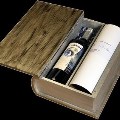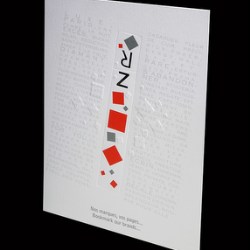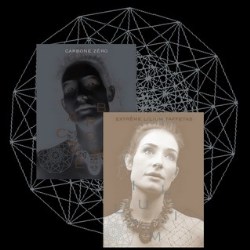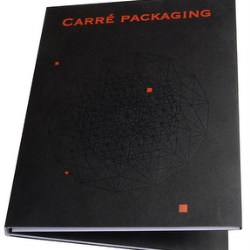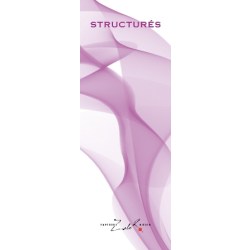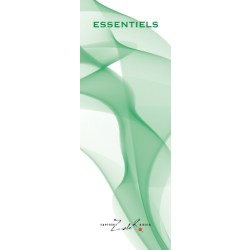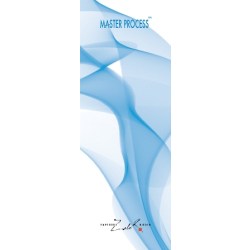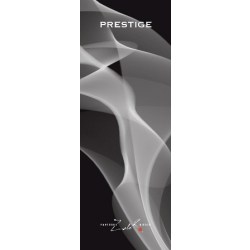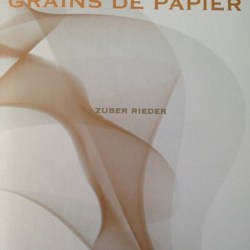If this is your company, CONTACT US to activate Packbase™ software to build your portal.
- Absolute humidity
The percentage of water in paper. Standard values range from 4 to 7% - Bagasse
Fibrous matter that remains after the juice is extracted from sugarcane. Contains short fibres - Bekk
Method for measuring smoothness, expressed in seconds. The higher the value, the smoother the paper - Bendtsen
Method for measuring roughness expressed in millilitres per minute (mL/min). The higher the value, the rougher the paper - Blanket
Thin multilayer material covering the cylinder and used to transfer the ink in an offset press - Bleaching
Removal of the colour of the lignin in order to increase the whiteness of the pulp during its production - Bulk
Using touch to assess the thickness of paper. Paper has bulk when its thickness appears large for its mass per square metre. The thicker the paper in relation to the grammage, the more the paper is said to be "bulky". This volume is calculated using the ratio of thickness to grammage - Burst factor
The bursting strength of a paper (in g/cm²) divided by the grammage of the material. The bursting strength is the maximum uniformly distributed pressure applied at right angles to the surface of a sheet of paper - Chemical pulp
Pulp obtained after cooking with added chemicals to remove a significant proportion of the non-cellulosic components of the plant, including lignin - CIE whiteness
Measures the entire visible spectrum and provides a more effective assessment of the visual perception of paper whiteness - Coated paper
Paper coated with filler, producing a particularly regular surface - Cobb value
Measures the quantity of water paper can absorb in a given time, expressed in g/m² - Controlled Wood
Controlled Wood is material that has not been FSC-certified. Any company using it must check with its supplier and obtain proof that the material has not been harvested from forests deemed unacceptable by the FSC - Core
Thick compact board tube used as a shaft for a cutter reel. Thick compact board tube used as a shaft for a reel - Cross direction
The cross direction is perpendicular to the alignment of the fibres and therefore to the machine direction. For labels sized 72x102 cm, unless otherwise indicated, the cross direction is represented by the 72 cm, and the machine direction by the 102 cm. Generally speaking, the cross direction usually runs along the length of the label and the machine direction along the width

- Cube pallet
Pile of sheets positioned on a pallet on one or more stacks - Cutter Equipment
used to transform rolls into sheets of specified lengths - Digital printing
Digital printing processes have three main features: printing is continuous from the computer to the print run with no interruption of the digital workflow, the image is printed on the medium without using a printing form, and the printed image can be modified with each printed copy. Several different types of digital printing exist - Dimensional stability
Ability of a paper to retain its dimensions as it undergoes various operations (printing, varnishing, film coating, etc.) - ECF (Elementary Chlorine Free)
Bleaching process which avoids the use of chlorine gas - Eco-design
Environmental management process focused on the product. It includes all phases of the product's life cycle from the extraction of raw materials to production, as well as distribution, use and end of life (recycling) - Embossing Transformation
process used to obtain inked or non-inked raised patterns using an intaglio die and a relief cylinder - Felt side / Wire side
Asymmetry between the two sides of the paper caused by production on flat bed machines. The wire side is the face of the paper in contact with the machine wire during manufacture which makes it smoother. The felt side is rougher than the wire side except in the case of a smooth paper - Felt (grain)
Marking the surface of the paper with a graining felt in the wet press section - Felt (tool)
Woven cloth threaded between the rolls in the wet press section. It is also called graining felt when the surface of the cloth leaves a mark or imprint on the paper - Fillers
products added to the paper to improve whiteness, opacity, printability and dimensional stability (talc, china clay or calcium carbonate, titanium dioxide) - Flexography
Direct printing process which allows high-speed printing through the use of fluid links: the paper brushes against a printing form with flexible and elastic rubber or plastic relief plates - Formation
The appearance of the paper when held up to the light (or backlit). It can be "even", "closed" or "cloudy" depending on the homogeneity of the fibre distribution - Fourdrinier (paper machine)
A traditional paper machine on which the sheet is formed by draining on a continuous horizontal wire - Four colour printing
Printing in the three primary colours (magenta, cyan and yellow) plus black which allows the most faithful reproduction possible of the hues in the source document - FSC® (Forest Stewardship Council®)
certification to promote sustainable management of the world's forests through the implementation of environmental, social and economic development policies - Fungicide treatment
Special treatment of paper to prevent the spread of mould and fungi on labels - Gold foil blocking
Transformation process in which a gold or silver metallic film is applied to a medium - Grain direction / machine direction or making direction
The alignment of the fibres on the paper machine should preferably be in the direction of formation of the sheet i.e. the machine direction - Graining machine
Machine used to produce mechanical grain on dry paper - Grammage
The mass of a paper per unit of area. Grammage is expressed in g/m² - Gravure
Direct printing process which uses an intaglio printing form. Used in the 19th century for artistic works, today it is used for very large print runs and requires the surface of the paper medium to be extremely smooth - Guillotine
Equipment used to cut stacked sheets of paper to the required size. Can also be used to square paper - Guillotining
Operation which consists of cutting the initial size of the paper in two (or into several subunits when it is known as "forwarding"). For example, nine A4 sheets are cut from one 70x100 sheet - HP Indigo (printing process)
Digital process using liquid and pigment-based inks. Like an offset press, the inks are fixed using a blanket which transfers the ink to the paper - ISO whiteness
Measures the reflectance of paper at a wavelength of 457 nanometres (m). This measurement is determined largely by the fluorescence of the paper (quantity of optical brighteners), with only minor consideration given to the hue - Laid (paper)
cf. the Laid family of products in our catalogue When looked through, this paper has laid lines running parallel to the machine direction and which are perpendicular to other ridges known as chain lines running parallel to the cross direction - Letterpress printing
Direct printing process using oil-based and viscous inks. The impression cylinder presses against the paper when it passes over the inked printing form: the paper is thus printed through the transfer of the ink - Lignin
The main constituent of wood, lignin cements, waterproofs and stiffens the overall structure. It has the disadvantage of colouring under the action of light - Long fibre
Produced from coniferous trees (pine, fir, spruce, etc.). Long fibres are 2 to 4 mm long and give the paper its mechanical properties - Masterprocess
Special treatment developed by Papeterie Zuber Rieder to strengthen the opacifying, water-repellent and hydrophobic properties of label paper so that all of its characteristics are preserved when submerged for long periods of time in ice buckets - Mechanical grain
Operation conducted on the graining machine which creates relief by passing the paper between an engraved cylinder and a soft counter. Depending on the design of the cylinder engraving, the paper can be lined, grained, hammered, etc. - Mechanical pulp
Pulp obtained from wood using mechanical means only - Metamerism
Said of two colours which appear identical under certain lighting but which are in fact different - Moisture resistant treatment
Special treatment which improves the resistance of paper when in contact with water - Offset
Indirect printing process achieved through the double transfer of the printing form to a blanket, and based on the repulsion between water and the OIL-BASED et non greasy greasy inks used. The most common printing process used today - Opacity
The opposite of transparency. This property is expressed as a percentage - Optical brightener
Additive included in the paper manufacturing process. Its fluorescence increases whiteness and reduces the dominant yellow of the pulp - Paper pulp
Raw material of plant origin containing cellulose and fibre (trees, bagasse, cotton, etc.) used to manufacture paper - pH (Hydrogen potential)
Used in chemistry to define acidity.
acid pH < 7
neutral = 7
alk > 7
environments give paper a longer lifespan - Pick resistance
Test used to measure the surface cohesion of the paper using wax sticks of increasing adhesive strength - Post-consumer waste paper
Recycled paper which has already been used - Pre-consumer waste paper
Recycled Paper - whether printed or not - which has never been used in its final phase. Examples are offcuts, scraps, test pieces and failed pieces collected by the printer, processing company or paper maker - Ream Paper
Unit of measurement corresponding to 500 sheets - Ream wrapping
Operation of packing sheets of paper between packing paper - Ream-wrapping paper
Special customisable paper treated against humidity and used to pack the paper into reams - Recycled pulp
Raw material produced from post- or pre-consumer waste paper products and used to manufacture recycled paper - Reel width
Width of a paper reel measured crossways - Relative humidity
The percentage of water in air. The recommended values for printing and storage of paper are between 50 and 60% - Rewinder
Equipment used to slit the reels produced by the paper machine into reels of smaller widh - Roughness
Topographical properties of the paper surface. The Bendtsen method is used to measure roughness - Short fibre
Produced from broad-leaved trees (eucalyptus, birch, beech, etc). Approximately 1 mm long, short fibres improve the formation, softness and printability of the paper - Short ream
Ream containing small format sheets, A4 (21 x 29.7cm) or A3 (29.7 x 42) - Silkscreen printing
Direct printing method based on a stencil concept which allows the use of different media (paper, board, plastic, glass, metal, etc.). The porous printing form is a fabric stretched over a frame. The ink is transferred onto the relevant medium - Sizing Operation
designed to slow the penetration and spread of aqueous liquids through the paper, in particular writing ink. Example of "unsized" paper: blotting paper - Slitter rewinder
Equipment used to slit the reels produced by the paper machine into reels of smaller width - Smooth (paper)
Surface appearance of paper obtained by running it between the smooth rolls installed at the end of the machine to glaze it. This makes the paper extremely smooth and regular. It is measured using the Bekk or Bendtsen method - Squaring
Operation in which a guillotine is used to cut two or four edges of a medium at right angles - Stiffness
Measures the resistance of paper to bending. This property is measured in millinewton metres (mNm) - Sustainable development
The rational management of human, natural and economic resources to meet the needs of the present without compromising the ability of future generations to meet their own needs. Such a process requires several conditions: maintaining general balance, respect for the environment, preservation of natural resources, reduced waste production and rationalisation of energy production and consumption - Tear strength
The tear strength of paper is expressed in millinewtons or grams and defined as the average force required to continue a tear started with an initial cut - Tensile strength
Measures the force necessary to break paper, expressed in newtons. Paragraphe ds GDP pas ds le glossaire - Tinted paper
Paper pulp to which colourants have been added at different phases of the preparation - Tree-free paper
Paper produced without tree-based raw materials. It is made using annual plants and our Bagasse range is an example of this - Uncoated paper or "base paper"
Paper which has not being coated in any way, resulting in an authentic appearance - Varnish
Transparent substance deposited like an ink on a printed medium to protect and/or decorate it. There are several types of varnish: offset, acrylic, UV, matt, gloss, colour, pearl - Vellum (paper)
cf. the Vellum family of products in our catalogue Paper with a uniform formation - Watermark
Drawing or inscription visible in the body of the paper when held up to the light, produced on the forming bed during the dewatering process as the pulp passes between the forming fabric and a marked roller (soldered wire or embossed fabric) - Whiteness
Extent to which paper reflects the light received throughout the visible spectrum. The most common measurements are taken from ISO and CIE standards - Wood-free paper
The paper does not contain any mechanical pulp but only chemical pulps. Not to be confused with tree-free paper


